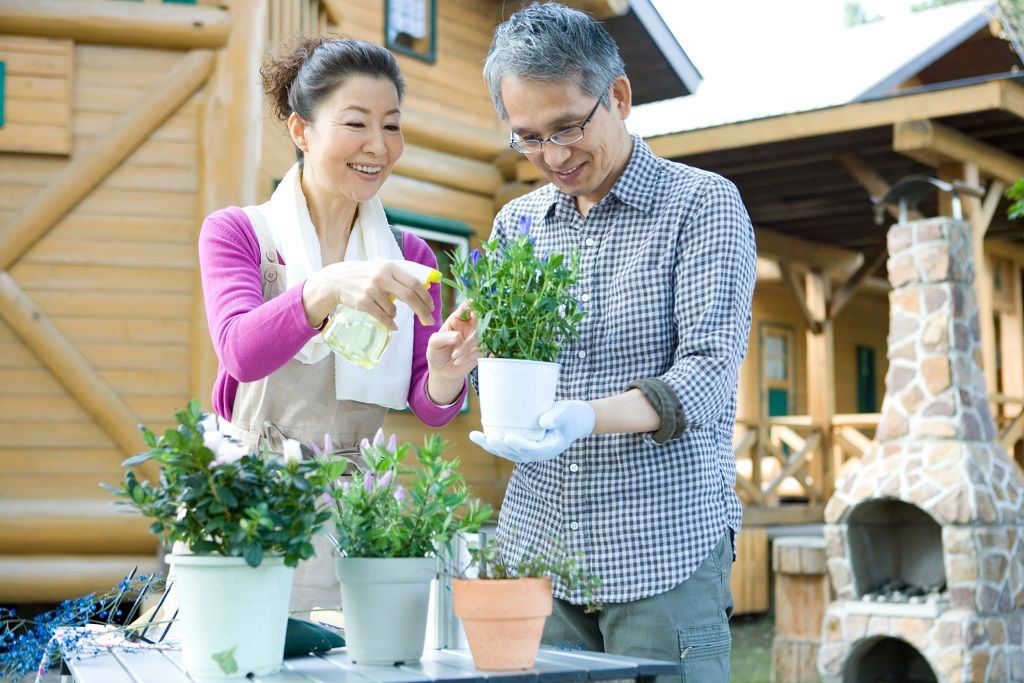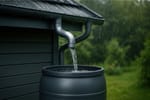Knowing how to care for your plants could make a big difference in their look and overall health.
Many people stress when it comes to caring for their plants.
And what makes the process so challenging is that each plant requires a specific set of care instructions.
Improper care can potentially limit the lifespan of your potted green family members.
The great thing about plants is if you take good care of them, they’ll return the favor by cleaning the air by utilizing carbon dioxide and producing oxygen.
That’s a big benefit, wouldn’t you agree?
Here are seven tips on how to care for your plants that you can implement immediately to help them gain optimum health…
1)) Watering
Overwatering kills most houseplants. Looks can be deceiving, so to see if your soil is dry enough to water, try the finger test.
Simply insert your index finger up to the first joint into the soil. If the soil is damp, don't water it.
Pro Tip: Keep the care instructions in the pot for easy reference or simply search for them online.
2)) Feeding
Foliage plants usually have high nitrogen needs, while flowering plants need K2O.
Slow-release fertilizers can be mixed with compost. However, certain plants like cacti and orchids need special fertilizers. Feed plants during their most active growth period.
3)) Lighting
Plants like Sanseveria and Aspidistra require no sun. They can be placed away from a window.
For instance, Spider plants need semi-shade.
You can put plants like these near a window that does or does not get sunlight.
Check the label to see what your plant needs.
4)) Temperature
Houseplants can survive in cool or warm temperatures, but drastic fluctuations in temperature may not be good for them.
One thing that most plants cannot survive is gas heating.
If you have a plant that likes warm conditions, don't put it near an air conditioner in the summer.
5)) Humidity
Some houseplants require a humid environment.
One tip to maximize humidity is to put the pot inside a larger pot and fill in the gaps with stones or compost to keep in the moisture.
Grouping plants together often creates a microclimate that they will benefit from.
If you want, you can spray them with water once or twice a day depending on the temperature.
6)) Re-potting
Some plants require re-potting for optimum growth but there are others that resent having their roots disturbed.
Or their root system may be small enough that they don't require re-potting.
One way to check if your plant needs re-potting is to turn it upside down.
Tap the pot to release the plant and check its roots. If roots are all you see, then re-pot.
Sometimes the roots will come out of the pot. You should either cut them off or re-pot the plant.
7)) Plant Care Tracker
Earlier, I mentioned that each plant has its own set of care instructions, which can get confusing, especially if you have several.
There’s no need to try and memorize the care instructions for every plant.
One of the best tools to help you keep your plants healthy is a Plant Care Tracker.
A plant care tracker allows you to give each plant the proper attention it needs to not only survive but thrive.
Plant Care Trackers Should Provide The Following Data Fields:
- Plant Name
- Month
- Year
- Date Planted
- Variety
- Destination
- Germination Date
- Transplant Date
- Harvest Date
- Plant Type
- Sunlight Needs
- Water Needs
- Notes
If you're ready to keep your plants healthier for a longer period of time, invest in a simple plant care tracker.
Conclusion
I just provided you with seven tips on how to keep your plants healthy that you can start applying today.
Since plants are living things, you must discipline yourself to properly care for them.
You already know that plants absorb carbon dioxide and produce oxygen, which improves the environment both indoors and out.
One of the best ways to ensure you raise healthy plants is to purchase them healthy.
There’s no need to spend money on a sick plant and then attempt to nurse it back to health.
It may sound superficial, but the one thing you need to check for on your prospective plants is how nice they look.
As far as plants go, you can truly judge a book by its cover.
If a plant has been treated healthily and has no diseases or pests, you can almost always tell by how nice it looks.
If a plant has grown up in improper soil or has harmful bugs living in it, you can tell from the holey leaves and wilted stems.
If you start your journey with healthy plants, they’ll most likely live for a long time with the proper care and a plant care tracker can easily help you manage the process.
Now that you know seven ways to boost the health of your plants, all that’s left for you to do is put this knowledge to use.
Download Our Free E-book!







